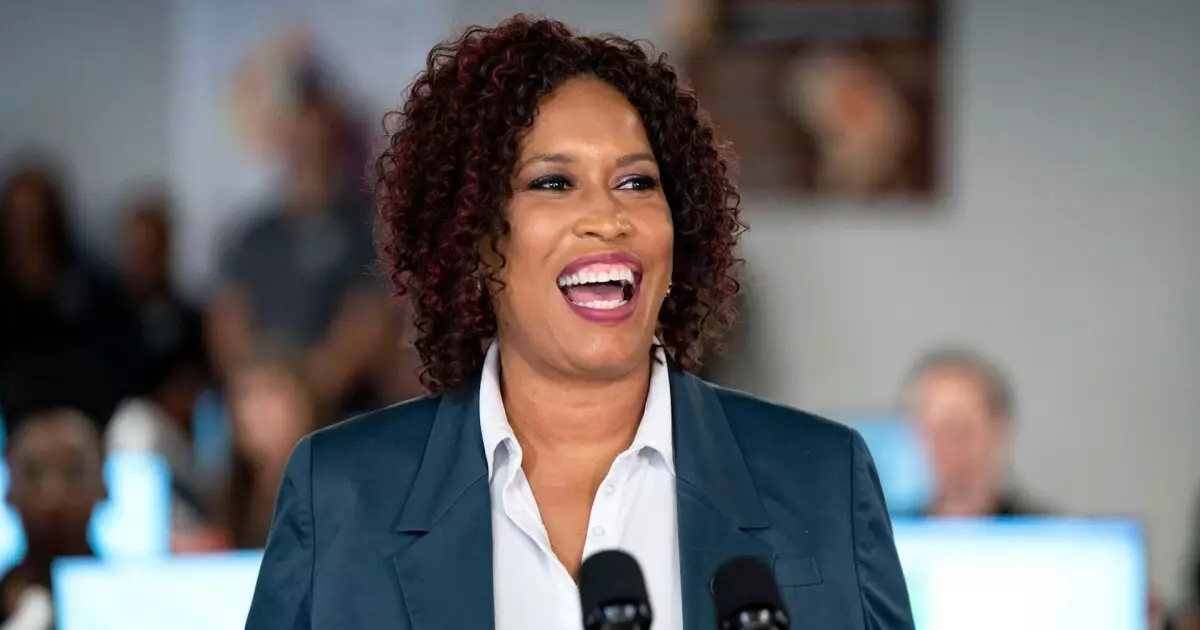The financial management of the District of Columbia is spiraling into precariousness following critical implications from a recent continuing resolution (CR) passed by the House. For the average citizen, this bureaucratic impasse may feel like a minor nuisance, but beneath the surface lies a brewing crisis threatening to upend the D.C. government’s fiscal stability. A significant lapse in the proposed language, which would allow the city to utilize its 2025 budget, has left Mayor Muriel Bowser grappling with the terrifying prospect of a massive $1.1 billion shortfall. The ramifications are dire, not just for government functions, but for countless residents and businesses that rely on a well-functioning local economy. The current fiscal policy, or lack thereof, has quietly echoed the dysfunction that many associate with the political capital of the United States.
A Leadership Vacuum Amidst Negotiation Fumbles
The sense of urgency is palpable as Mayor Bowser has voiced her growing concerns regarding the budget fiasco. Her press remarks earlier this week highlighted a crucial deadline that, if unmet, will force the city into “extraordinary measures” to balance its finances. It begs the question: where is the decisive leadership needed to solve a now-urgent fiscal problem? A two-week congressional recess looms ominously, further complicating negotiations. In this politically charged atmosphere, the mayor’s urgent appeals for congressional action fail to convey assurance. They signal a leadership vacuum that remains unfilled, leaving constituents in the lurch.
The blame game is easy in politics, but what is often overlooked are the countless individuals who are unwittingly pulled into this web. The specter of widespread workforce reductions looms as recent federal government “downsizing” could potentially displace over 40,000 local jobs over the next four years.
Impact of Federal Government Policies on Local Economies
Decisions made in the name of federal governance have cascading effects on local economies, and Washington D.C. serves as a glaring case study. The mayor’s acknowledgment of impending job losses illustrates a chilling reality brought on not merely by national politics but by an oft-overlooked interdependency between local and federal jurisdictions. The ceaseless cuts to federal jobs trickle down to a local level, contributing to a shrinking economic base in a city reliant on a thriving job market.
Yet even amid these warning signs, there remains a glimmer of hope stemming from bipartisan support for the city’s needs. President Trump recently announced the formation of a task force aimed at beautifying D.C. and cracking down on illegal immigration—while such measures could arguably serve to improve the livability of the city, their effectiveness hangs in the balance of a well-funded local government. Investment in safety measures and infrastructure may assist in mitigating some of the negative consequences, but without a solid budget framework, these efforts risk becoming costly Band-Aids on a fractured fiscal system.
The Consequences of Poor Budgeting
The preliminary outlook is troubling, as the three major bond rating agencies have cast a shadow over D.C.’s financial outlook. Both Fitch Ratings and Moody’s are raising red flags that suggest a potential downgrade on the city’s financial standing. The government must operate on a four-year balanced budget framework legally, and any hesitance in fulfilling this requirement jeopardizes not just fiscal health, but also citizen trust in governance. Such mistrust erodes confidence and can defer investments that promote long-term economic development.
Additionally, the recent incarceration of municipal efforts to maintain public spaces has raised eyebrows. Mayor Bowser’s remarks about overflowing trash during significant civic events underline a failure in operational governance. If a city cannot even maintain its public aesthetics, what does that say about its broader fiscal and political health? It is not merely an issue of visual harmony; it hints at deeper systemic failures in managing civic responsibilities.
In wrapping up this critical examination of D.C.’s fiscal roller coaster, it becomes clear that the intersection of local governance and federal politics remains fraught with challenges. Through this lens, we shall see whether the impending crisis will serve as a rallying point or merely another fluctuation in the city’s tumultuous political landscape. The coming weeks will reveal much about the capability of our leadership in navigating a labyrinth of budgetary complexity and political maneuvering.

